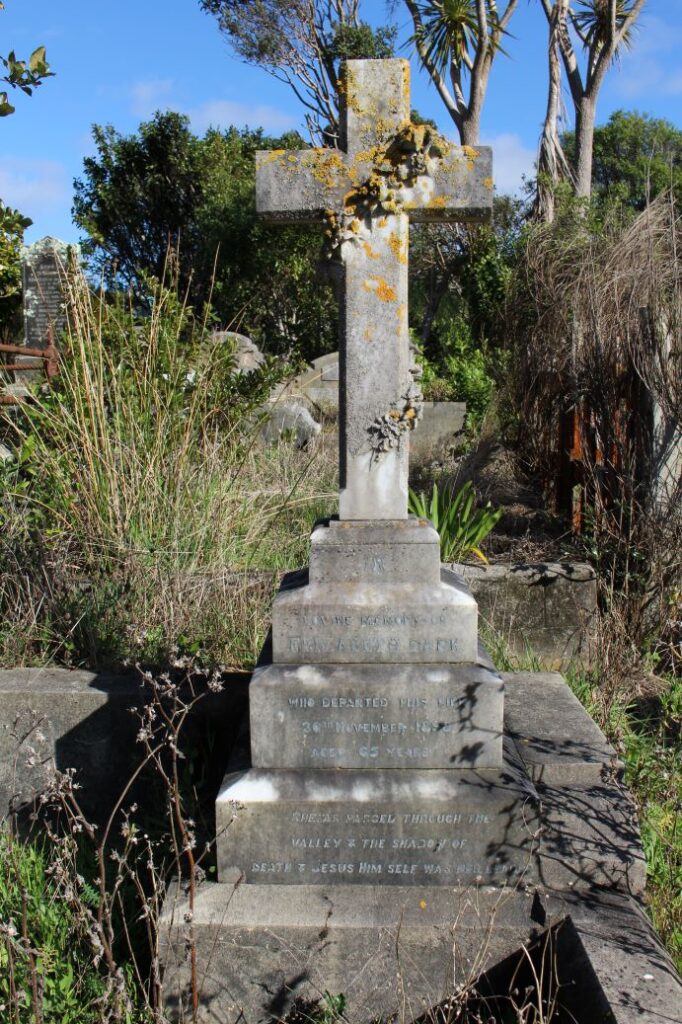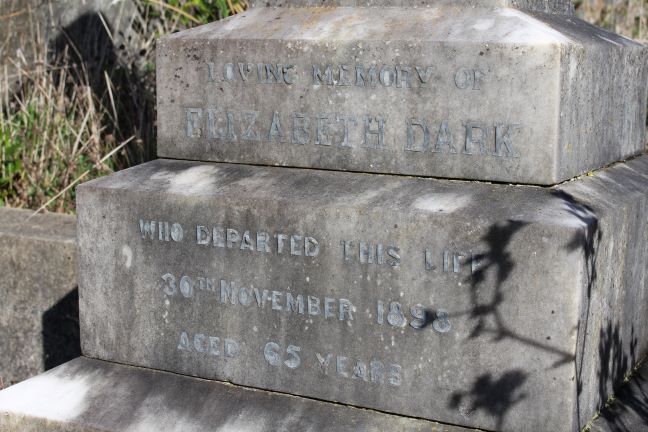Elizabeth Dark (previously Hastings, born White)
Elizabeth was the second wife of William John Dark. William’s first wife Hannah died in 1871 leaving him with a small daughter.
William married Elizabeth Hastings (nee White) on 1st June 1872. She was the widow of John Hastings and had six children by her first marriage. She was 34 years old and William was 41. William and Elizabeth Dark had four daughters together: Emily, Alice, Williemena and Mabel were born 1873 – 1881.
By September 1872, things were already deteriorating in their relationship. William advertised that he was not responsible for any debts contracted by his wife. In October the following year, Elizabeth applied to the court for a protection order against her husband. He did not appear and the case was struck out.
In 1877, William was made bankrupt and then charged with defrauding his creditors. The following year Elizabeth again requested a protection order against her husband. She said that William had repeatedly beaten her with a stick. In his defence, William said that Elizabeth was addicted to drinking, had beaten him with a pair of boots, threatened to rip out his heart and that there was nothing to eat when he came home. He would very much like to be separated from her but he could not afford the 25s maintenance as he had a child from his first marriage to support. The Magistrate said that unless Elizabeth could disprove William’s statements ‘it would be the worse for her’.
Elizabeth must have had some success because in 1880 Willliam was charged with failing to support her. She stated she had been obliged to leave him because of his ill treatment and needed support for the children. She said she could earn a living to support herself. We don’t know the outcome but in 1882 William was again made bankrupt. He was also imprisoned that year for for committing a breach of the peace with his brother-in-law. During this time Elizabeth applied to the Benevolent Institute for assistance which was granted.
In 1883 an order was made against William to pay 5s per week for the maintenance of his children and the protection of his wife. As a result, William sold all of the household goods and moved to Australia, leaving Elizabeth and her young children destitute. She had ‘neither furniture, bedding or common necessities’. She was awarded 5s per week from the Benevolent Institute.
The following year Elizabeth replied for relief again. This time she was reported as being intemperate and that her husband had offered to pay the children’s passage to join him in Sydney. No action was taken.
Having presented himself as a widower, in 1887 William bigamously married the widow Ann Parkins at Penrith NSW.
Things caught up on William when Ann intercepted some mail indicating Elizabeth was still alive. He declared he would go to New Zealand to confirm his wife was dead. He returned a month later and said he had gone to her burial place. A further letter arrived from Elizabeth asking for maintenance for herself and the children. This was too much for Ann and she left William. But seven years later William reappeared in Ann’s home town saying that his wife was finally dead. He said that she had been accidentally poisoned and that Elizabeth’s daughter was implicated. William was arrested and charged with bigamy. Elizabeth travelled to Australia to give evidence in court. He eventually pleaded guilty and was sentenced to three months jail at Darlinghurst.
Elizabeth died at her daughter’s house in Holland Street on 30 November 1898. Her death notice read ‘Her end was peace’.
Elizabeth is the first of 11 internments in this family plot. Her daughter Agnes Brown (nee Hastings), granddaughters Elizabeth Schofield (nee Brown) and Ethel Brown and great grandchildren (infant twins) Edna and Neil Schofield are also interred here.
Plot: *Public/K/21
This story was inspired by an entry about Elizabeth in the book ‘My Hand Will Write What My Heart Dictates’ by Charlotte Macdonald and Frances Porter (eds) and also by a biographical entry made on Elizabeth’s FindaGrave webpage.
By Julia Kennedy

Elizabeth Dark’s headstone

Elizabeth Dark’s inscription
